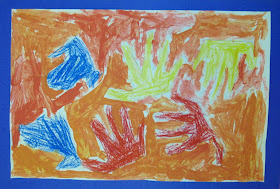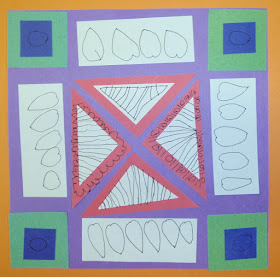3D Paper Masks
This is a fun project to do with students in grades 4, 5 or 6. I did this with 4th grade.
You will need:
glue
construction paper in various colors
hole punch
scissors
pencils
We began by discussing masks and what they might be used for: Halloween, parties, ceremonies, etc.
To make our masks we cut a large oval from construction paper. Then we cut a small triangle out of the top and bottom of the oval. Fold the mask in half and then glue the cut edges together. This will make your mask 3D. You can do this step last or first. Depending on the storage space you have.
The best masks have a lot of attention to detail. So we start by cutting out shapes for the eyes. Think of this as eyeshadow. Then make the eyes. A football shape with a pupil on it. Add some fun details to the mask: dots are a good idea. We used the hole punch to punch out lots of dots. Add eye brows of some sort.
Next make the nose. A long triangle shape works well for the nose. Make it symmetrical so you can fold it in a half and glue it down. Then make the mouth. Again fold it in half so it is symmetrical. You can make all of the features 3D by gluing the edges down rather than the entire thing.
Last, we add hair and lots of fun details. The hair can be many colors or
one color: straight, curly, crimped, etc. Have fun with it!
Here are our wonderful masks! Enjoy!



















































